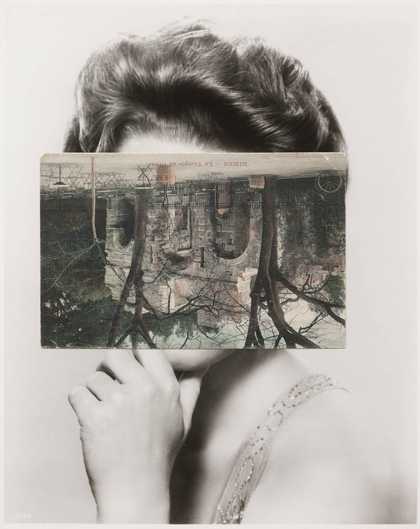
John Stezaker
Mask XIII (2006)
Tate
Discover works in which artists explore the complex ways humans spread thoughts and ideas

John Stezaker
Mask XIII (2006)
Tate
It’s probably in all our minds when we hear the word transmission at the moment. Pandemic diseases have reared their head throughout human history – often changing and shaping societies and sometimes destroying others. The bubonic plague reappeared throughout the 1500s and 1600s often decimating populations across Europe in particular.
Ciprian Muresan’s sculpture Plague Column #2 draws its title from memorial monuments that were created in Central Europe from the fourteenth to the sixteenth centuries in gratitude for the end of plague epidemics. They often featured images of the saints people wanted to thank.
Muresan’s columns are made by putting together plaster moulds he had created for other works. He then poured resin into this new composite mould, creating a new work from them. This sandwiching of elements takes the old meanings of the works and squashes them into a new one.
How might we transmit our thoughts, feelings, ideas about the period we have been living in? How does it connect us to other times in human history?
‘my work is not connected to history in a classical way. I think a lot about how to negotiate history or deal with heritages and traces of the past.’

Ciprian Muresan
Plague Column #2 (2016)
Tate
Australian artist Helen Johnson looked at the transmission of disease across Australia after European colonisation began. Bad Debt 2016 includes images of animals that are not indigenous to Australia, such as foxes, rabbits and representations of the smallpox virus. Foxes, rabbits and smallpox are notorious examples of the species and diseases introduced to Australia by colonists which killed huge numbers of Aboriginal Australian people and destroyed ecosystems and habitats.
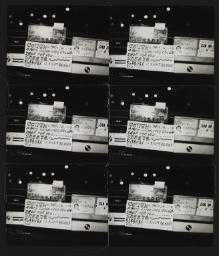
Andy Warhol
Cough (1986)
ARTIST ROOMS Tate and National Galleries of Scotland
© 2025 The Andy Warhol Foundation for the Visual Arts, Inc. / Licensed by DACS, London
In the 1940s, during World War Two and after, the Department for Health in the UK commissioned many posters and cinema ads encouraging people to ‘keep their germs in their handkerchiefs’ to stop the spread of colds and flu, and ‘keep the nation fighting fit’. Andy Warhol took photos of many aspects of his life from the people he met as well as graffiti on the streets. Cough shows an image he took in the back of a New York City taxi, where the driver offers passengers tissues for sneezes and a cough drop sweet if they need to cough. How do we feel about people coughing now?
We tend now not to use handkerchiefs, but masks to keep our germs to ourselves. But what else do we transmit when we open our mouths? And what might be hidden as well as contained by masks?
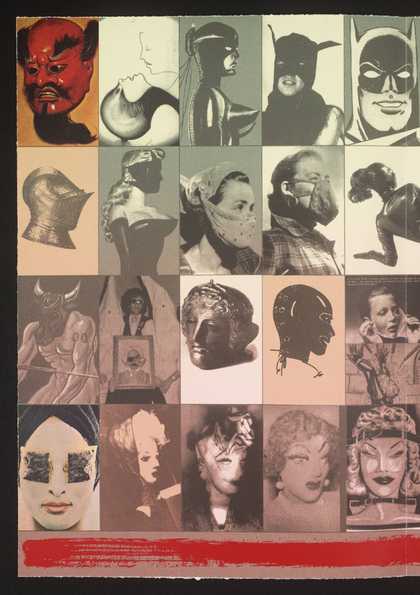
Allen Jones
[no title] (1976–7)
Tate
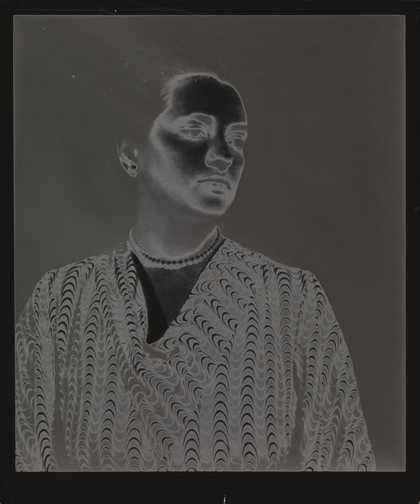
Lionel Wendt
[title not known] (c.1933–8)
Tate

Gary Hume
Yellow Hair (1998)
Tate
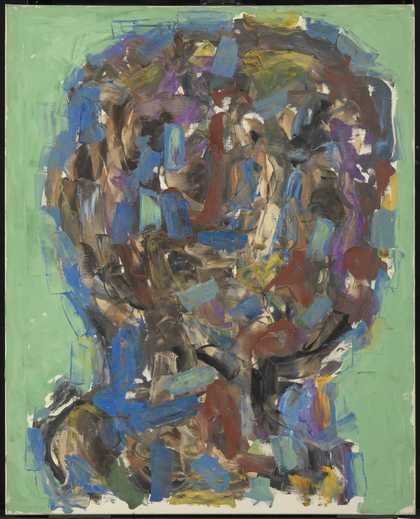
William Turnbull
Head (1956)
Tate
Until the advent of the internet, radio broadcast was the quickest and simplest way to transmit information. From news bulletins and propaganda to super-niche pirate radio stations and secret coded messages, radio waves have carried every sort of communication.
In This is Radio Moscow ... Viktor Pivovarov depicts a scene in an apartment building in Soviet Russia in the 1950s. He created a whole series imagining the private lives of fictional Russian citizens forced to live communally. His artworks of this time have a sense of melancholy and loneliness. Maybe something is missing. What is the radio telling the characters? And what is it not telling them? What does transmission of ideas look like in a regime where ideas can be dangerous?
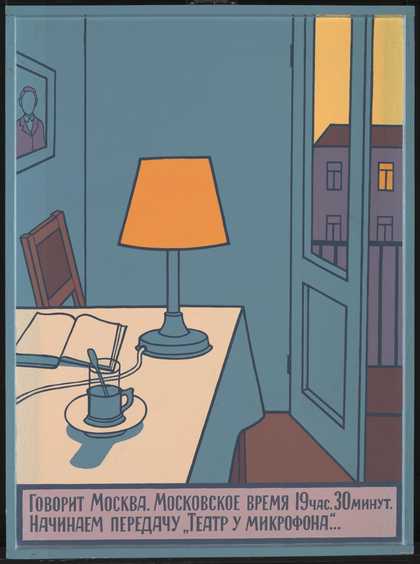
Viktor Pivovarov
This is Radio Moscow ... (1992–6)
Tate
With so much information on the airwaves artists wondered if we might be suffering from information overload. How much info can we really absorb?
Brazilian artist Cildo Meireles refers to his artwork Babel as a ‘tower of incomprehension’. It's a tower of hundreds of radios, each tuned to a different station. It produces a constant noise but the voices and musicare of course always different, always changing. And since so much audio is being played at once, can we understand any of it?
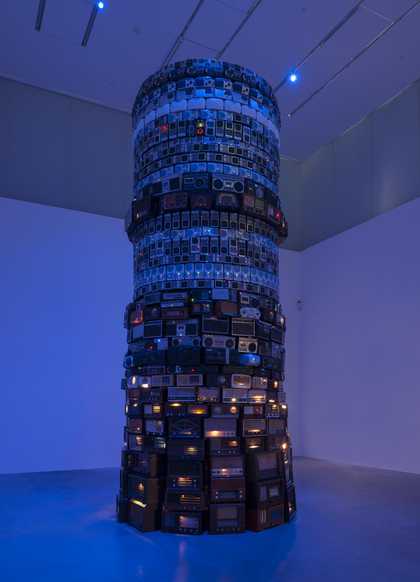
Cildo Meireles
Babel (2001)
Tate
But radio transmission may not still hold that pride of place. How is the transmission of ideas affected by social media? Maybe mobile signal is more important than a radio broadcast signal now.
Back in 2000, video artist Tony Oursler was already thinking about how new technology might impact humans.
The Influence Machine Oursler was thinking of with the title of this work was Francis Hauksbee’s ‘Influencing Machine’ made in 1706. It had a vacuum glass bowl which could be rotated. This created static electricity, which gave off a mysterious light and crackling lightning. While it had no practical use, it became popular as people associated it with almost magical powers, some calling it the ‘glow of life’.
In Oursler’s work, people were able to input messages into a website and one of the video installations would read them out. He was interested in exploring how we might react and interact with these new technologies. Would we assign these new technologies powers they didn't really possess? What does influence look like now? Is it still just smoke and lights?
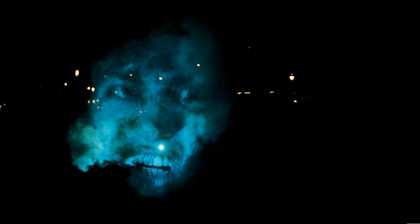
Tony Oursler
The Influence Machine (2000)
Tate
It is incredible to think that in just around 100 years humans have gone from making the very first radio transmissions to global communication networks, and satellite signals bouncing from the Earth to space and back in seconds.
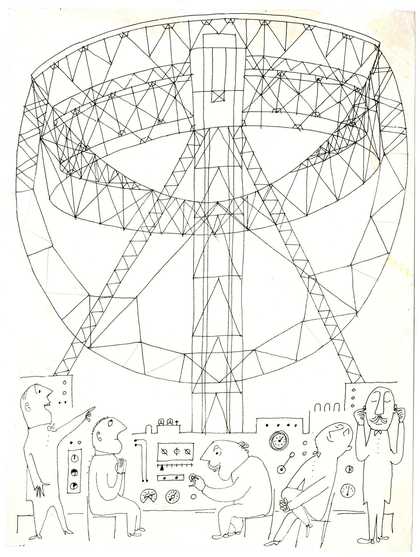
Franciszka Themerson
Science and Technology I (radio-astronomy) (1954)
Tate
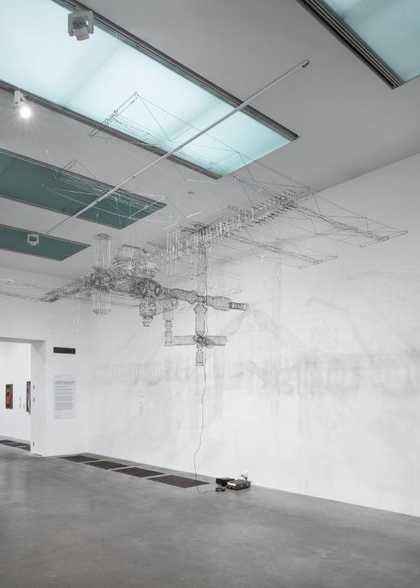
Jennifer Allora, Guillermo Calzadilla
Ten minute transmission (2003)
Tate
Jennifer Allora and Guillermo Calzadilla’s work Ten Minute Transmission is inspired by Vladimir Tatlin’s famous artwork, the never-built design for Monument to the Third International – a huge tower with a rotating radio station at the top. It was supposed to suggest the power and revolution of the modern world.
Their work uses the title Ten Minute Transmission to remind us that for the astronauts on the International Space Station, there was a ten- minute window in which they could send and receive radio transmissions from Earth.
Can we always transmit our ideas or our thoughts the way we hope? In Mother Tongue the artist, Zineb Sidera, and her mother and daughter try to exchange childhood memories in their native languages. Sidera speaks in French, her mother in Arabic and her daughter speaks English. While Sidera is the link between the two generations, her daughter and mother cannot speak in their ‘mother tongues’ to each other. Storytelling is a way to preserve and transmit cultural identity across generations. And how do we continue to share heritage across national and linguistic divides?
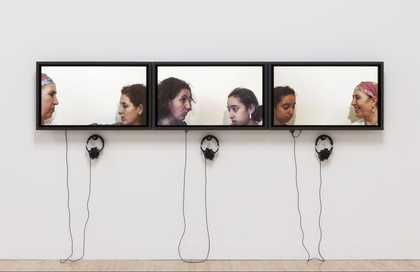
Zineb Sedira
Mother Tongue (2002)
Tate
Indian artists Gauri Gill and Rajesh Vangad collaborated on the artwork The Eye in the Sky. They were trying to capture the history and traditions of Vangad’s people, the Warli. Vangad drew in black ink on Gill’s photographs. His drawings are inspired by the Warli traditional motifs and visual culture, and Gill's photograph is of Vangad himself in the landscape he was born in. His drawings change and mutate from natural forms like birds, leaves and trees, to human-made planes and urban cityscapes. Together they transmit ideas about the ongoing encounter with modern technology and urban life. How can collaboration make our ideas stronger? How do our messages change when someone else’s thoughts are involved?
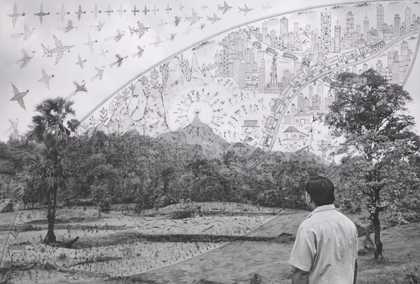
Gauri Gill, Rajesh Vangad
The Eye in the Sky (2016)
Tate
How can messages and ideas reach huge numbers of people? Before the digital message boards of the 1980s made anonymous messages common, artists found ways to transmit (often political) messages outside the gallery walls.
For the Banknote Project Cildo Meireles stamped subversive messages onto banknotes in Brazil before spending them and putting them back in circulation. At the time, Brazil was governed by military dictatorship. This artwork was a form of political resistance to escape the strict censorship. The messages in both English and Portuguese, included calls for democracy like ‘Straight Elections’, and the words ‘Quem Matou Herzog?’ or ‘Who Killed Herzog?’, referring to a journalist who died in police custody under suspicious circumstances. Meireles stamped the banknotes on both sides – one side had the message and the other had the work’s title and his statement. The messages circulated invisibly within Brazilian society. He said:
‘This would be a form of language, a system essentially opposed to the media of press, radio and television – typical examples of media that actually reach an enormous audience, but in the circulation systems of which there is always a degree of control and channelling of the information inserted.’
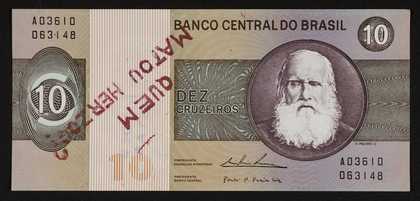
Cildo Meireles
Insertions into Ideological Circuits 2: Banknote Project (1970)
Tate
The artists collective Guerilla Girls have used poster and flyer campaigns since the 1980s to target museums, galleries and the wider art world.They have used these traditional systems of transmission as well as humour and bold graphic design to get their messages about discrimination in the art world to the widest number of people. What are the systems that can be disrupted today? Who is disrupting them?

Guerrilla Girls
You’re Seeing Less Than Half The Picture (1989)
Tate
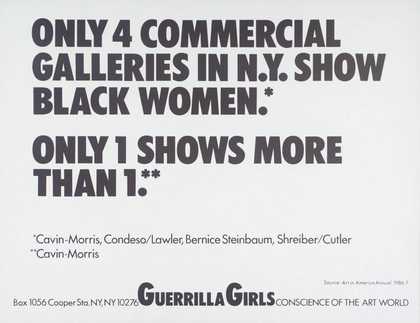
Guerrilla Girls
Only 4 Commercial Galleries In NY Show Black Women (1986)
Tate
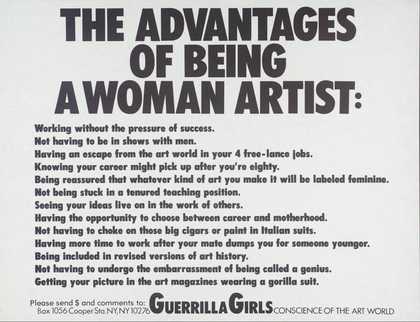
Guerrilla Girls
The Advantages Of Being A Woman Artist (1988)
Tate